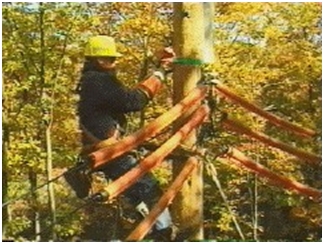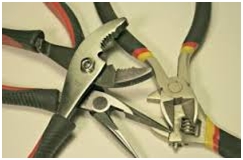Home › Electrical Engineering Forum › General Discussion › 10 most important safety precautions while working on low voltage equipment
- This topic has 0 replies, 1 voice, and was last updated 9 years, 11 months ago by
Steven Mill.
-
AuthorPosts
-
2015/03/30 at 1:24 pm #11244
Steven Mill
ParticipantHi this is Steven Mill and today I want to tell you about my experience as an electrical engineer. That’s why I wrote this article which gathers 10 safety precautions you should take when you work on LV equipement.
I have put together this article with an intention of providing some safety precautions to all those electricians and electrical engineers out there, who work on low voltage equipment regularly. Irrespective of the kind of experience you have in this field, I strongly suggest you to stay alert even when you are repairing the minutest of the faults, especially, when the electrical equipment is live.
Being an electrical engineer and having served in this field for over 10 years, I strongly recommend you to follow the below mentioned ten most important safety precautions that can help you keep away from electrical hazards.
1. Pre-Job safety measures
This is very important. Conduct a meeting with fellow employees and discuss about the safety measures that should be followed if an electrical accident takes place. These discussions should answer important questions like, “What if someone gets paralyzed due to an electrical shock?” “What if someone gets burnt?” etc.
Try and assess all sorts of risks associated with the job before you start working on it. Formulate some crystal clear solutions.
2. Check the history
Before you actually start working on the system, try to know the history of the equipment. This will help you understand what kind of problems the equipment had previously, what parts of it were damaged, what parts were replaced. This will help you assess the condition of the equipment and its vulnerabilities.Also go through the blue print of the equipment. It has all the information regarding its installation. This helps you to understand its schematic diagram, technical specifications, wirings, circuit diagrams, etc that can assist you to work smoothly without running into dangerous situations.
Don’t forget to make sure that the documents belong to the same equipment that you are going to work on. There are chances that the equipment might have been replaced with a new one, or similar equipment that has been used elsewhere.
3. Less exposure
Try to deal with the live parts quickly as possible. I do not mean that you mess it up. If you are able to clear the problem pertaining to the live parts quickly, you can later jump on to the other faulty components, without having to worry about any electrical hazards.
4. Cover live parts
Do not leave live components of the electrical equipment uncovered, while you are working on the dummy ones. Cover the live metal properly with an insulating material. I would advise you to use Plexiglas plates for an effective protection from live parts.
5. Watch your ground
Please ensure that all the metal parts that are grounded are covered properly. This is very important. Insulate them to as much extent as possible, to keep yourself safe, just in case if you step on it.
6. Beware of fault currents
While you are working on the equipment, I suggest you to keep the fault currents as low as possible at the point, where you are trying to fix the problem. Let me explain. Let us say, that you are trying to measure the voltage of the equipment. Then do it on the load side of the equipment that contains circuit-protective device, with lowest current rating.
I also suggest that you make use of current-limiting devices to keep yourself safe from the sudden voltage spikes and arc flashes.
7. Rough conditions
When you are working in rough conditions like a muddy ground, a rainy or snowy day, make sure that all your tools are insulated properly before getting into contact with a live conductor. In fact, I would suggest you to avoid working in such conditions.But, if it is a must, insulate yourself as much as you can, along with your tools.
8. Do not wear metal
I strongly recommend that you remove all the metal from your body. The reason being, if the metal comes into contact with any live part, there is every possibility of getting involved in short-circuits.
In case, you are wearing any bracelets used for alerting medicos, make sure you cover it with a transparent tape or a wrist band made of rubber.
9. Position yourself properly
If you are operating a safety switch, make sure that you use one hand. Care should also be taken that your face and body are turned to the other side. This will minimize the risk of injuries to the face and body.
When working with safety switches, there is always a possibility of arc flash. Hence, cover yourself properly and do not place your body directly in front of any energized electrical equipment.
10. Wear appropriate clothing
Last but not the least, use best quality clothing, shoes, gloves, and spectacles (if need be). Do not compromise on what you wear. I have seen people who have saved themselves from injuries just because they were wearing the right working gear.
Conclusion
I have put together these ten safety points from what I have learned in my journey as an electrician and then, as an electrical engineer for 10 years. I have seen many electrical hazards happen and have also seen people who got injured from such accidents.
I hope that you guys will try to implement what I have said above, and keep yourself safe from unwanted electrical accidents. Remember, there is someone waiting for you at home, so try not to be LATE.
Steven Mill.
Thank you Steven for that article! Do you fellows agree with that list? Do you have anything you can add to it?
-
AuthorPosts
- You must be logged in to reply to this topic.



